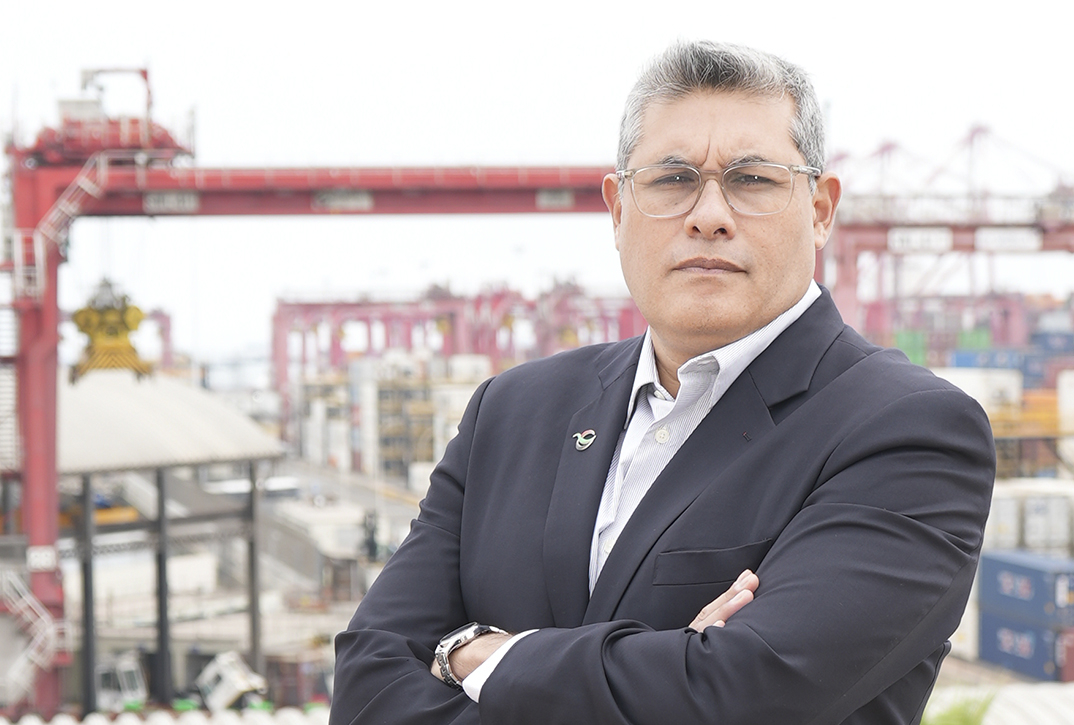
When plans for the construction of the Bicentenario Dock began, no one expected the opening of the Chancay megaport, which now seeks to absorb 30% of the cargo that today passes through Callao. Carlos MerinoCEO of DP World for Peru and Ecuador, sees an unbeatable opportunity to increase the country’s port competitiveness.
—Part of DP World routes in Peru and Ecuador head to Asia. It is an angular square on this side of the Pacific.
-Yeah. We have 21 weekly calls, of which 8 go to Asia and touch the main ports of that continent, with different maritime services and shipping lines.
—How will they compete with the 25-day direct routes from Chancay to China?
—Callao is a historic port and has maintained its relevance for many decades. The fact of incorporating much more investment in the South Pier only reaffirms the confidence we have in the strategic position of our terminal and, obviously, in the country. We believe that Peruvian trade will continue to grow.
—But when the Bicentenario Pier project began, Chancay was not on the radar.
—Many things were not on the radar. The investments we make are long-term, and obviously we are subject to many variations in the market, positive and negative. Let’s not only talk about infrastructure additions, but let’s also talk about the effects that were two years ago with respect to covid, the drought of the Panama Canal, the conflicts in the Red Sea. There are many things that can impact you, but DP World knows that, indeed, the vision has to be global and long-term.
—He is putting covid and Chancay on the same table.
-No not at all. These are, finally, factors for which one, as a port operator, has to be ready. Some are international in nature and others are internal. Finally, Chancay represents for us more infrastructure for the country, which is positive, as it energizes and increases competitiveness. We see a fairly positive future in that, it is not a threat.
—Do you consider that your market position will be maintained?
—The activity towards Asia is something that we have and that we recognize as very important for DP World. We consider that it will be maintained and that the position of Callao, which is relevant today, will be relevant in the future.
—Precisely, different laws have been issued in Chancay to favor port activity, such as cabotage.
—With this reform I believe that it will provide total flexibility so that users, clients, the lines themselves can generate what gives them the most efficiency. The fact that you have infrastructure and the capacity to receive very large ships and small ships, to precisely transfer between ships and do it quickly, that is what we were missing.
—And if you were a Peruvian or Ecuadorian exporter, which port would you prefer to cabot with? Callao or Chancay?
—It depends on what product I have, how far away, what line I work with, what service I require, what port I end up at. There are terminals in China, Korea, etc. Finally, it is premature to pigeonhole ourselves into one choice or another. International trade is dynamic and what we do is provide greater national and regional capacity.
—Port concessions may also be extended for up to 30 years. Will they seek to apply?
—It’s still too early to know. I see the law as a positive legal framework, but the regulations are missing. We have been investing in Peru for 18 years, and this definitely allows us to analyze future investments.
—It also allows the concessionaire to carry out works, not only within the port area.
—Yes, it will be a very big contribution if the law allows ports to invest in their accesses and thus avoid congestion, dynamize the flow, which is very important when we talk about logistics. It only recognizes that the government and the sector have complete knowledge of the necessary flow.
—Would you like to participate with more infrastructure outside the port?
—We are always evaluating it. In infrastructure, investments in general. All ports have problems in the plants. That is why it is positive that this law is incorporated.
—What role does Dubai-based DP World hope to play on the west coast of South America?
—The fact of adding capacity, both in Peru and the one we are going to increase in Ecuador, is always welcomed by the lines within their strategy to generate efficiency in the trades. The position of our terminal becomes much more relevant and obviously that of Callao, which, let us remember, has been ranked second in Latin America in efficiency by the World Bank.
—What’s next in Callao?
—We just made an investment of US$400 million and we are going for another of approximately US$45 million next year, to acquire two additional cranes. This only makes our docking front the most powerful in the country at the port level, with twelve gantry cranes, the last two even much larger than the previous ones, and the capacity to serve three vessels simultaneously and give them the greatest productivity. We are committed to the country.
Source: Larepublica
Alia is a professional author and journalist, working at 247 news agency. She writes on various topics from economy news to general interest pieces, providing readers with relevant and informative content. With years of experience, she brings a unique perspective and in-depth analysis to her work.












